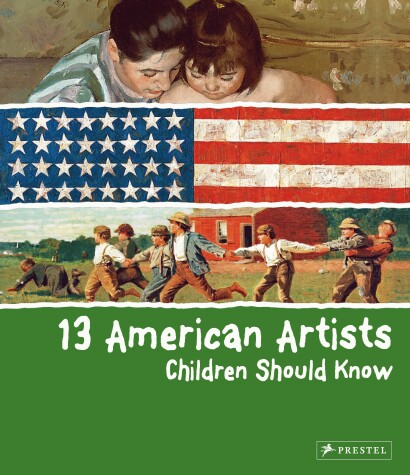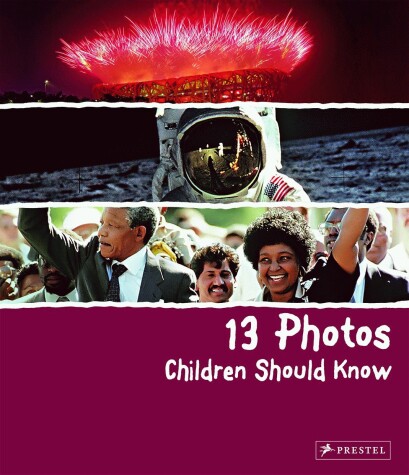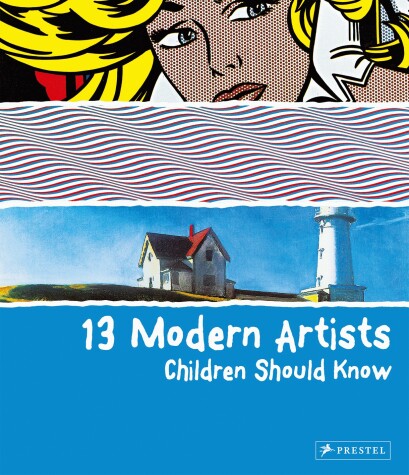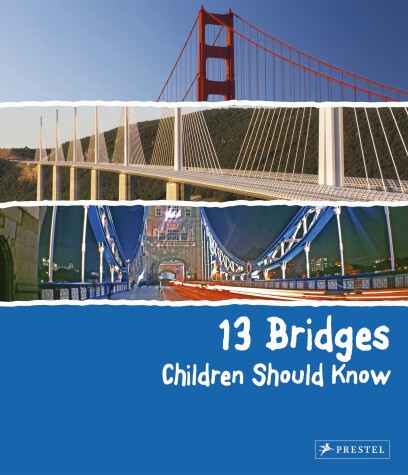13 Children Should Know
6 total works
Who was Whistler's mother? Why did Georgia O'Keeffe paint all those flowers? How did Joseph Cornell create his incredible boxes? These questions and more are answered in this book on American artists designed to catch young readers' attention and satisfy their unending curiosity. Each artist is featured in double-page spreads that are as unique as their subjects. Fascinating biographical portraits, interesting sidebars, and ideas to spark the imagination enhance the exquisite reproductions of well-known works. Presented chronologically, these profiles are strung together by a continuous timeline that highlights world events that impacted the artists' work. Children and adults alike will find much to learn, savour, and enjoy in this colourful introduction that is both interactive and edifying-not to mention fun.
Some of the world's most renowned pictures are also the most exciting to view and discuss. From Neil Armstrong's first steps on the moon to the fall of the Berlin Wall; Lindbergh's historic landing in Paris to Nelson Mandela's release from prison; portraits of Albert Einstein, Princess Diana and the Beatles; the opening ceremony of the Beijing Olympics and the devastating oil spill in the Gulf of Mexico-these and other history-making photographs are presented in double-page spreads that offer stunning reproductions of the images themselves, helpful background information on the events and people they portray, and perspectives on the circumstances that inspired them. Paging through these photographs, children will learn not only about people and events that changed the world, but how photographs preserve and help us understand these important moments.
This heavily illustrated book, featuring the world's greatest modern artists, is an excellent introduction for young readers to modern art. The featured artists - including Picasso, Chagall, Calder, Lichtenstein and Hockney - are introduced in a format and style that will appeal to children, and are arranged chronologically with an accompanying timeline. Each artist's entry includes a concise biography, beautiful reproductions of major works, and lively texts that speak directly to young readers. Games, quizzes and other activities help readers learn about the significant contributions of each artist in a way that is both fun and inspiring. Additional information about museums, suggestions for further reading, and online resources will satisfy the most curious minds.
The bridges profiled in this engaging book for young readers have achieved legendary status. Filled with photographs, plans, drawings and informative texts it explores the fascinating history, construction, design and significance of 13 renowned structures in a manner that will appeal to children hungry for information. In double-page spreads that highlight important as well as little-known facts, they will learn about the building of the Millau Viaduct, the tallest bridge in the world; how the Golden Gate bridge lives up to its evocative name; the haunting history of Venice's 16th-century Bridge of Sighs, and the ingenious construction methods devised by the builders of the Brooklyn Bridge. Vibrantly designed to encourage children to linger and explore the subject further, this book will appeal to curious minds, and inspire its young readers to dream and build on their own.
TBC
There's something irresistible about a skyscraper. It can reshape an entire city skyline and from the building's top floors, people can see the world from a different perspective. Travelling from New York City to Dubai, from London to Shanghai, and from Kuala Lumpur to Chicago, this colorful book featuresdouble-page spreads for each of the skyscrapers it profiles. Each chapter includes photographs, information on the building's architect and history, and interesting facts about its construction and use. For instance, why is the Chrysler Building so admired, even though it doesn't stand nearly as tall as other skyscrapers? How do you measure the height of a building and how do you make sure it doesn't topple over in strong winds? How has skyscraper technology changed, from the steel frame skeletons that supported the earliest towers to the advanced computer programs that are now needed to design buildings more than 100 stories high? How has city life changed since the first skyscrapers were built? Written in a style that will draw in young readers, this fascinating tour of the world's tallest buildings will satisfy even the most curious minds.





